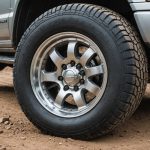Enhancing brake performance in UK sports cars doesn’t always require costly system overhauls. Often, simple adjustments can lead to significant improvements in responsiveness and safety. From optimizing brake fluid to choosing the right pads, minor tweaks can transform your driving experience. Discover how these straightforward modifications can unleash your car’s true potential without breaking the bank, ensuring every drive is not only exhilarating but also secure.
Understanding Brake Performance Enhancements
In the realm of sports car upgrades, enhancing brake performance is a critical aspect that directly influences both safety and driving pleasure. Braking efficiency is paramount, especially in the UK where diverse driving conditions demand reliability and precision.
Also to read : Ultimate Guide to Moisture-Proofing the Electrical System of Your British Off-Road Vehicle
Braking systems in UK sports cars are meticulously designed, combining advanced technologies with robust materials to ensure optimal performance. These systems typically include components such as calipers, rotors, and pads, all working harmoniously to deliver effective stopping power. The importance of brake performance cannot be overstated; it is crucial for maintaining control during high-speed maneuvers and ensuring the safety of both driver and passengers.
Several factors can affect brake performance in sports cars. These include the quality of brake components, the condition of the braking system, and even the type of tires used. High-performance brake pads, for example, can significantly enhance braking efficiency by providing better grip and heat dissipation. Additionally, regular maintenance and timely upgrades are essential to keep the braking system in peak condition.
Have you seen this : Upgrading Your Classic British Car: A Step-by-Step Guide to Installing Adaptive Cruise Control
Ultimately, investing in sports car upgrades that focus on improving brake performance not only enhances safety but also elevates the overall driving experience, allowing enthusiasts to fully enjoy the capabilities of their vehicles.
Cost-Effective Tweaks for Braking Improvement
Enhancing your sports car’s braking system doesn’t always require a hefty investment. There are several cost-effective modifications that can significantly boost performance.
Upgrading Brake Pads
One of the simplest yet effective DIY brake improvements involves upgrading your brake pads. High-performance brake pads are designed to withstand higher temperatures, offering improved grip and durability. This upgrade can enhance braking efficiency without breaking the bank. Consider options like ceramic or semi-metallic pads, which provide excellent heat dissipation and reduced brake fade.
Choosing the Right Brake Fluid
Selecting the appropriate brake fluid is crucial for maintaining optimal brake performance. Brake fluid types vary, with DOT 3, DOT 4, and DOT 5.1 being the most common. Each type has distinct boiling points and viscosities, impacting how they perform under stress. For most sports cars, DOT 4 is recommended due to its balance of performance and cost-effectiveness.
Rotors and Disc Maintenance
Regular maintenance of rotors and discs is essential for ensuring long-lasting braking performance. Inspecting for wear and tear, such as grooves or warping, can prevent further damage. Rotor maintenance might involve resurfacing or replacing them with slotted or drilled variants, which improve heat management and braking consistency. These tweaks ensure your braking system remains responsive and reliable.
Compatibility with UK Vehicle Standards
When enhancing brake performance in sports cars, ensuring compliance with UK vehicle standards is essential. The UK has stringent safety regulations governing brake systems to ensure road safety. These regulations stipulate specific requirements for brake components and their performance, ensuring that any modifications do not compromise safety.
To comply with these safety regulations, it is crucial to select parts that meet or exceed the standards set by authorities. This includes choosing brake pads, rotors, and fluids that are approved for use in the UK. Manufacturers often provide certification or documentation to confirm that their products are compliant, which should be checked before making any upgrades.
Recommended practices for ensuring compliance include consulting with professionals who are familiar with UK standards. They can provide guidance on the most suitable components and installation practices. Additionally, regular inspections and maintenance of the braking system can help maintain compliance and performance.
When selecting parts, consider those that are specifically designed for the UK market, as they are more likely to meet local standards. This ensures that enhancements not only improve brake performance but also adhere to necessary safety regulations, providing peace of mind on the road.
Performance Gains from Simple Modifications
In the pursuit of enhanced braking efficiency, simple modifications can yield significant performance gains. These tweaks not only improve safety but also elevate the overall driving experience.
Impact of Weight Reduction
Reducing vehicle weight is a straightforward method to boost braking efficiency. A lighter car requires less force to slow down, directly translating to improved brake performance. By removing unnecessary components or opting for lighter materials, you can enhance your sports car’s responsiveness. This modification benefits not only braking but also acceleration and handling.
Tire Compatibility and Performance
Selecting the right tires is crucial for maximizing performance gains. Tires with superior grip ensure that the braking system functions optimally, reducing stopping distances. Compatibility with your vehicle’s specifications is vital; mismatched tires can compromise safety and efficiency. Consider high-performance tires designed for sports cars, which offer better traction and stability.
Brake Cooling Solutions
Effective brake cooling is essential for maintaining braking efficiency during prolonged use. Overheating can lead to brake fade, reducing effectiveness. Implementing brake cooling solutions, such as installing brake ducts or using ventilated rotors, can significantly enhance cooling efficiency. These modifications help dissipate heat more effectively, ensuring consistent brake performance under demanding conditions.
Safety Considerations and Risks
When enhancing brake performance, it’s crucial to address potential safety concerns to avoid any brake performance risks. Modifying brake systems without proper knowledge can lead to severe safety issues. Improper modifications may result in brake failure or compromised stopping power, posing significant risks to both driver and passengers.
Professional Installation
For complex upgrades, such as installing high-performance brake kits or altering brake lines, professional installation is essential. Experts ensure that components are correctly fitted, aligned, and functioning as intended. This not only enhances safety but also maximizes the benefits of the modifications. Trusting professionals reduces the likelihood of errors that could lead to dangerous situations on the road.
Regular Maintenance Checks
Routine inspections are vital for maintaining the integrity of the braking system. Regular checks can identify wear and tear, ensuring that each component operates efficiently. Maintenance tasks such as inspecting brake pads, checking fluid levels, and assessing rotor conditions help prevent unexpected failures. By addressing issues promptly, you maintain optimal brake performance and mitigate potential risks.
In conclusion, prioritizing modification safety through professional installation and regular maintenance is essential. It ensures that enhancements improve performance without compromising safety, providing peace of mind during every drive.










